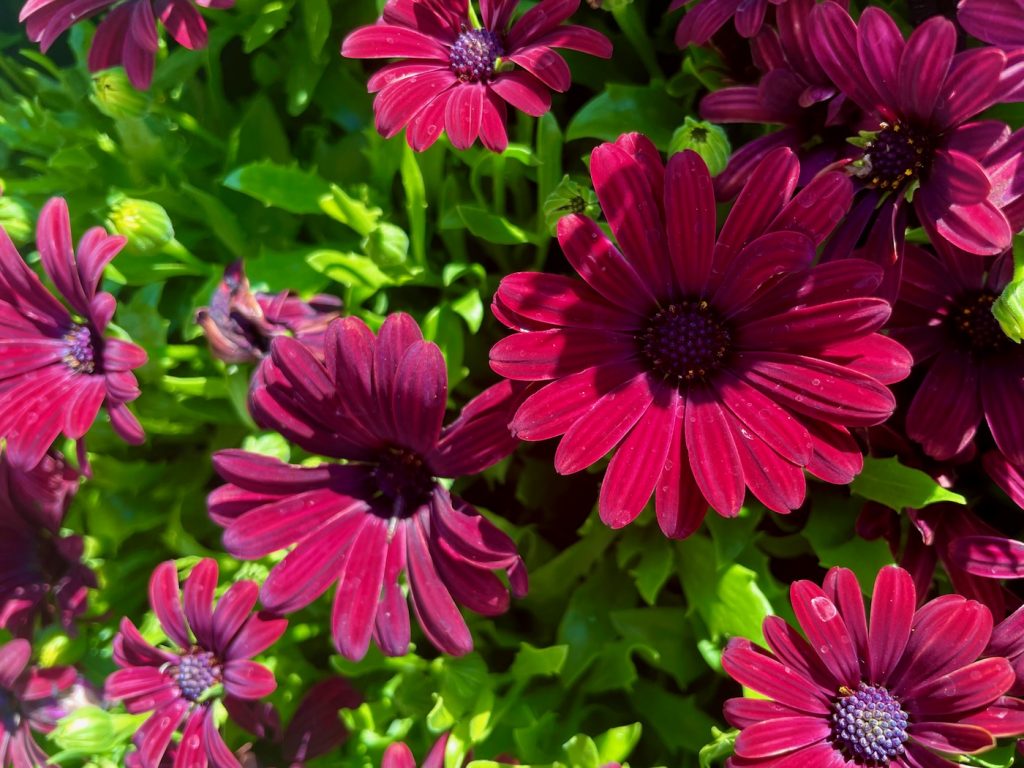Anigozanthos, commonly known as Kangaroo Paw or Catspaw, is a genus of Australian plants belonging to the family Haemodoraceae, also known as the Bloodwort Family. The genus was first named by Jacques-Julien Houtou de Labillardière (1755-1834), a French biologist who focused on Australian botany. Labillardière described and named the genus in his book “Relation du Voyage à la Recherche de la Pérouse” after collecting specimens during his expeditions to Australia in 1792.
The Kangaroo Paw has a special significance in Western Australia, where the Red-and-green Kangaroo Paw (Anigozanthos manglesii) has been adopted as the state’s floral emblem. This unique plant is highly valued for its striking flowers and is widely recognized as an iconic symbol of the region.
Anigozanthos plants are herbaceous perennials characterized by their dark green, sword-like leaves. The flowers, which range in color from deep yellow to red and pink, are the most distinctive feature of the Kangaroo Paw. The name “Kangaroo Paw” is derived from the tubular shape of the flowers, which resembles the paw of a kangaroo.

Characteristics:
The height of Anigozanthos plants can vary, with most species growing to around 3 feet (1 meter) tall. However, certain varieties can reach heights of up to 6 feet (2 meters). The flowering period typically occurs from late spring through fall, providing a vibrant display of colors in the garden.
Anigozanthos plants prefer well-drained or sandy soil but are adaptable to various soil types. They are known for their ability to survive dry periods due to the presence of saps in their underground rhizomes. These rhizomes store nutrients and water, enabling the plant to withstand periods of drought.
The growth habit of Anigozanthos involves the formation of a basal rosette of dark greyish-green leaves. Some species may have hairy leaves, adding texture to their appearance. Rising from the center of the rosette are leafless stalks that form a raceme of flowers. These racemes are often covered in colored hairs, giving them a fuzzy or velvety texture. The flower buds themselves are also covered in hair, contributing to the unique and captivating look of the plant.
Anigozanthos Cultivars:
Anigozanthos, commonly known as Kangaroo Paw, offers a range of cultivars with varying heights and characteristics. These include hybrids between Anigozanthos flavidus and Anigozanthos pulcherrimus, displaying blossoms in shades of yellow, red, and orange. Additionally, hybrids between Anigozanthos flavidus and the Rufus group exhibit burgundy, bright red, or orange-red flowers. These vigorous growers demonstrate good resistance to fungal diseases. Notable tall Kangaroo Paw cultivars include:
- Big Red: An evergreen perennial reaching 6 feet tall and 2 feet wide, featuring bright red flowers from spring to fall.
- Bush Dawn: An evergreen perennial growing 6 feet tall and 2 feet wide, with yellow flowers blooming from spring to fall.
- Bush Devil: An evergreen perennial with leaves reaching 1-2 feet in height and red flowers on red stems, standing 3-4 feet tall from spring to fall.
- Bush Sunset: An evergreen perennial reaching 5-6 feet tall and 2 feet wide, showcasing dark red flowers from spring to fall.
- Landscape Lilac: An evergreen perennial growing 5-6 feet tall and 2 feet wide, displaying lilac-pink flowers throughout spring to fall.
- Orange Cross: An evergreen perennial standing 4-5 feet tall, adorned with orange flowers in summer.
- Red Cross: An evergreen perennial, 4-6 feet tall, featuring dark burgundy-red flowers in spring and summer.
- Yellow: An evergreen perennial reaching 6 feet tall and 2 feet wide, with yellow flowers blooming from spring to fall.

Small Anigozanthos Cultivars:
On the other hand, the dwarf and small cultivars have shorter lifespans and result from crosses between Anigozanthos flavidus and shorter-lived species such as A. humilis, A. bicolor, or A. gabrielae. However, these compact Kangaroo Paw cultivars exhibit abundant blooms over an extended flowering period, with some even flowering year-round in frost-free conditions. They are well-suited for container gardening and make splendid-cut flowers for indoor arrangements. Noteworthy dwarf Kangaroo Paw cultivars include:
- Bush Diamond: A perennial reaching 2-3 feet tall, featuring white fuzzy flowers on pink stems.
- Bush Lantern: Characterized by narrow linear light green foliage, this variety stands 10-16 inches tall and boasts yellow fuzzy flowers.
- Bush Pearl: A perennial with narrow green linear leaves, showcasing pink fuzzy flowers and growing 1-2 feet tall.
- Bush Ranger: An evergreen perennial with leaves reaching 1-2 feet tall and red flowers on red stems, standing 2-3 feet tall from spring to fall.
- Kanga Burgundy: An evergreen perennial with leaves reaching 1 foot tall and red flowers on red stems, blooming up to 2 feet in height from spring to fall.
Summary:
These diverse Kangaroo Paw cultivars offer an array of options to suit different garden preferences, providing an enchanting display of vibrant and fuzzy flowers that add a touch of uniqueness and charm.
Anigozanthos, or Kangaroo Paw, is a remarkable genus of Australian plants. With its dark green sword-like leaves and tubular, brightly colored flowers, it adds a touch of exotic beauty to gardens and landscapes. With proper care and well-drained soil, these perennials can thrive and provide a stunning display of unique flowers that resemble the paw of a kangaroo. The Kangaroo Paw holds a special place in Western Australia, where it is cherished as the state’s floral emblem and celebrated for its significance and beauty.






